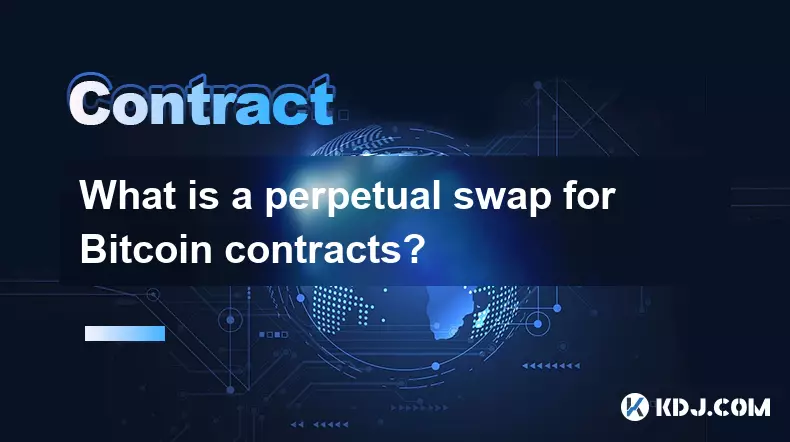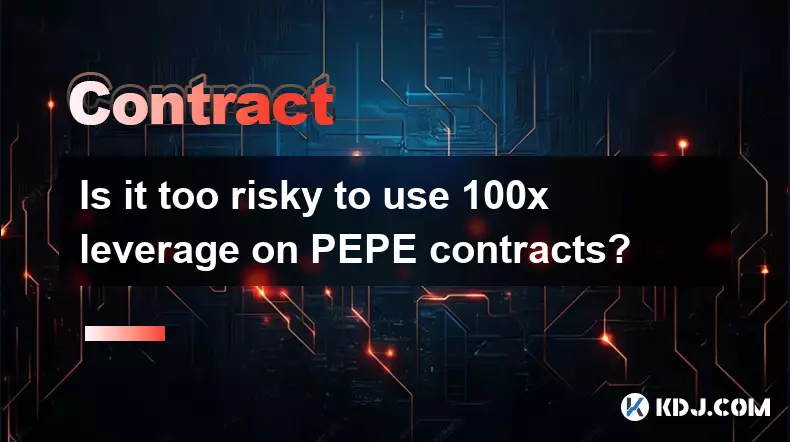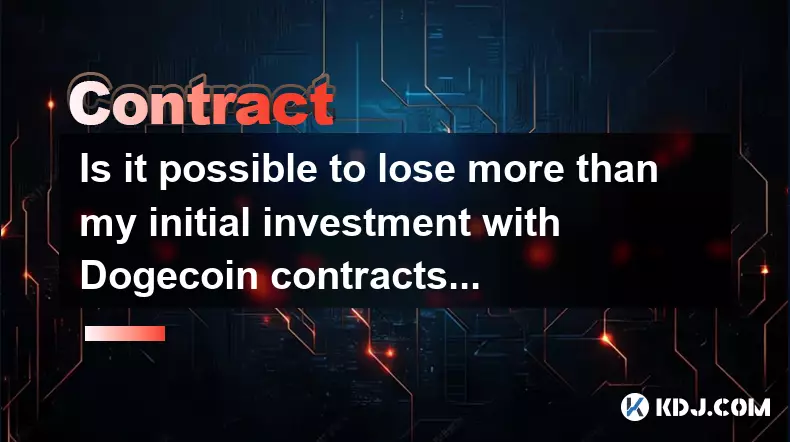-
 bitcoin
bitcoin $122659.385674 USD
0.52% -
 ethereum
ethereum $4484.113342 USD
-0.09% -
 bnb
bnb $1304.229256 USD
-0.85% -
 tether
tether $1.000204 USD
-0.03% -
 xrp
xrp $2.860636 USD
-0.51% -
 solana
solana $227.288799 USD
2.36% -
 usd-coin
usd-coin $0.999805 USD
0.01% -
 dogecoin
dogecoin $0.252837 USD
1.18% -
 tron
tron $0.341149 USD
1.12% -
 cardano
cardano $0.830507 USD
0.33% -
 hyperliquid
hyperliquid $45.792319 USD
0.04% -
 chainlink
chainlink $22.422164 USD
1.55% -
 ethena-usde
ethena-usde $1.000283 USD
0.01% -
 sui
sui $3.511389 USD
0.83% -
 stellar
stellar $0.385276 USD
-0.44%
What is a perpetual swap for Bitcoin contracts?
Perpetual swaps allow leveraged, expiration-free Bitcoin trading with funding rates aligning contract prices to spot, but carry liquidation risks.
Oct 01, 2025 at 08:18 am

Understanding Perpetual Swaps in Bitcoin Trading
1. A perpetual swap is a type of derivative contract that allows traders to speculate on the price of Bitcoin without an expiration date. Unlike traditional futures, which settle on a specific date, perpetual swaps can be held indefinitely as long as margin requirements are met.
2. These contracts derive their value from the underlying asset—in this case, Bitcoin—and are settled in cryptocurrency, often in stablecoins like USDT or the native platform token such as BTC or ETH.
3. The absence of an expiry removes the need for constant rollover between contracts, making it easier for traders to maintain long-term positions.
4. Perpetual swaps are widely used on major crypto exchanges such as Binance, Bybit, and BitMEX, where both retail and institutional traders engage in leveraged trading.
5. Funding rates play a critical role in aligning the price of the perpetual swap with the spot market, ensuring minimal divergence over time.
How Funding Rates Work in Perpetual Contracts
1. Funding rates are periodic payments exchanged between long and short traders to tether the contract price to the spot price of Bitcoin.
2. When the perpetual swap trades above the spot price, indicating bullish sentiment, longs pay shorts. This incentivizes selling pressure and helps pull the price down.
3. Conversely, if the contract trades below the spot price, shorts pay longs, encouraging buying activity to bring the price back in line.
4. These payments typically occur every eight hours and are calculated based on the difference between the mark price and the index price, along with prevailing market demand.
5. High funding rates can signal extreme market conditions—excessively positive rates may suggest an overbought market, while negative ones may reflect oversold sentiment.
Leverage and Margin Mechanics
1. Perpetual swap platforms allow traders to open positions with leverage, sometimes up to 100x depending on the exchange and contract size.
2. Traders must post collateral, known as margin, which is held in the trading account and used to absorb potential losses.
3. Maintenance margin represents the minimum amount required to keep a position open; falling below this threshold triggers liquidation.
4. Isolated and cross-margin modes offer different risk exposure strategies. Isolated margin limits risk to a defined portion of funds, while cross-margin uses the entire balance to prevent liquidation.
5. Liquidations occur when losses deplete the allocated margin, and the system automatically closes the position to prevent further debt to the exchange.
Price Indexing and Mark Price
1. To prevent manipulation, exchanges use a composite index price derived from multiple spot exchanges rather than relying on a single source.
2. The mark price, used for calculating unrealized PnL and triggering liquidations, is typically based on the index price plus a fair-value premium or discount.
3. This mechanism protects traders from unfair liquidations during periods of high volatility or flash crashes on any one exchange.
4. The spread between the last traded price and the mark price reflects temporary imbalances but is corrected through funding and arbitrage activity.
5. Transparent calculation methods for both index and mark prices are essential for trust and fairness in the perpetual swap ecosystem.
Frequently Asked Questions
What happens if I hold a perpetual swap during high volatility?During high volatility, liquidation risks increase significantly, especially for highly leveraged positions. Rapid price swings can trigger stop-losses or lead to automatic liquidation if margin levels fall below maintenance requirements. Monitoring your position and adjusting leverage accordingly is crucial.
Can funding rates go negative?Yes, funding rates frequently go negative when the perpetual swap price trades below the spot price. In such cases, short position holders pay longs, reflecting bearish sentiment in the market.
Do all exchanges offer the same funding rate intervals?Most major platforms charge funding every eight hours, usually at 00:00 UTC, 08:00 UTC, and 16:00 UTC. While the interval is standardized across many exchanges, exact timing and calculation methodologies may vary slightly.
Is trading perpetual swaps riskier than spot trading?Perpetual swap trading carries higher risk due to leverage, funding costs, and liquidation mechanisms. Losses can exceed initial deposits, and rapid market movements can result in sudden capital erosion, making it more complex than straightforward spot purchases.
Disclaimer:info@kdj.com
The information provided is not trading advice. kdj.com does not assume any responsibility for any investments made based on the information provided in this article. Cryptocurrencies are highly volatile and it is highly recommended that you invest with caution after thorough research!
If you believe that the content used on this website infringes your copyright, please contact us immediately (info@kdj.com) and we will delete it promptly.
- Shiba Inu Price Crash? Layer Brett Captures Meme Coin Spotlight
- 2025-10-09 19:05:14
- XRP Tokens: Can Owning Them Actually Make You Rich, Ya Know?
- 2025-10-09 18:45:15
- ADA Whales: Riding the Support Wave to Potential Gains?
- 2025-10-09 18:25:16
- Millionaire Trader's XRP Chart: Investor Challenge or Golden Ticket?
- 2025-10-09 19:25:12
- H Mining: Navigating Crypto Investing with Risk Mitigation
- 2025-10-09 18:45:15
- Riding the Crypto Rollercoaster: IPO Genie, Crypto Presales, and Liquidation Lessons
- 2025-10-09 18:25:16
Related knowledge

How to calculate the ROI for Ethereum contracts?
Oct 09,2025 at 04:36pm
Understanding Ethereum Contract ROI Basics1. Return on Investment (ROI) for Ethereum contracts begins with tracking the initial capital deployed into ...

What are the settlement procedures for XRP contracts?
Oct 09,2025 at 04:01pm
Understanding XRP Futures and Derivative Contracts1. XRP derivative contracts are typically offered by cryptocurrency exchanges that support margin tr...

How to reduce trading fees for Bitcoin contracts?
Oct 09,2025 at 02:37pm
Understanding Bitcoin Contract Trading Fees1. Trading fees on Bitcoin contracts are typically charged by exchanges for executing buy and sell orders. ...

Is it too risky to use 100x leverage on PEPE contracts?
Oct 09,2025 at 04:18pm
Understanding 100x Leverage in PEPE Contracts1. Trading PEPE contracts with 100x leverage allows traders to control a much larger position using a sma...

Is it possible to lose more than my initial investment with Dogecoin contracts?
Oct 09,2025 at 02:00pm
Understanding the Risks of Dogecoin Futures Trading1. Trading Dogecoin futures contracts introduces financial exposure that extends beyond the origina...

What is the difference between futures and perpetual contracts for Bitcoin?
Oct 02,2025 at 11:54pm
Understanding Bitcoin Futures Contracts1. Bitcoin futures are derivative instruments that allow traders to speculate on the future price of Bitcoin at...

How to calculate the ROI for Ethereum contracts?
Oct 09,2025 at 04:36pm
Understanding Ethereum Contract ROI Basics1. Return on Investment (ROI) for Ethereum contracts begins with tracking the initial capital deployed into ...

What are the settlement procedures for XRP contracts?
Oct 09,2025 at 04:01pm
Understanding XRP Futures and Derivative Contracts1. XRP derivative contracts are typically offered by cryptocurrency exchanges that support margin tr...

How to reduce trading fees for Bitcoin contracts?
Oct 09,2025 at 02:37pm
Understanding Bitcoin Contract Trading Fees1. Trading fees on Bitcoin contracts are typically charged by exchanges for executing buy and sell orders. ...

Is it too risky to use 100x leverage on PEPE contracts?
Oct 09,2025 at 04:18pm
Understanding 100x Leverage in PEPE Contracts1. Trading PEPE contracts with 100x leverage allows traders to control a much larger position using a sma...

Is it possible to lose more than my initial investment with Dogecoin contracts?
Oct 09,2025 at 02:00pm
Understanding the Risks of Dogecoin Futures Trading1. Trading Dogecoin futures contracts introduces financial exposure that extends beyond the origina...

What is the difference between futures and perpetual contracts for Bitcoin?
Oct 02,2025 at 11:54pm
Understanding Bitcoin Futures Contracts1. Bitcoin futures are derivative instruments that allow traders to speculate on the future price of Bitcoin at...
See all articles










































































